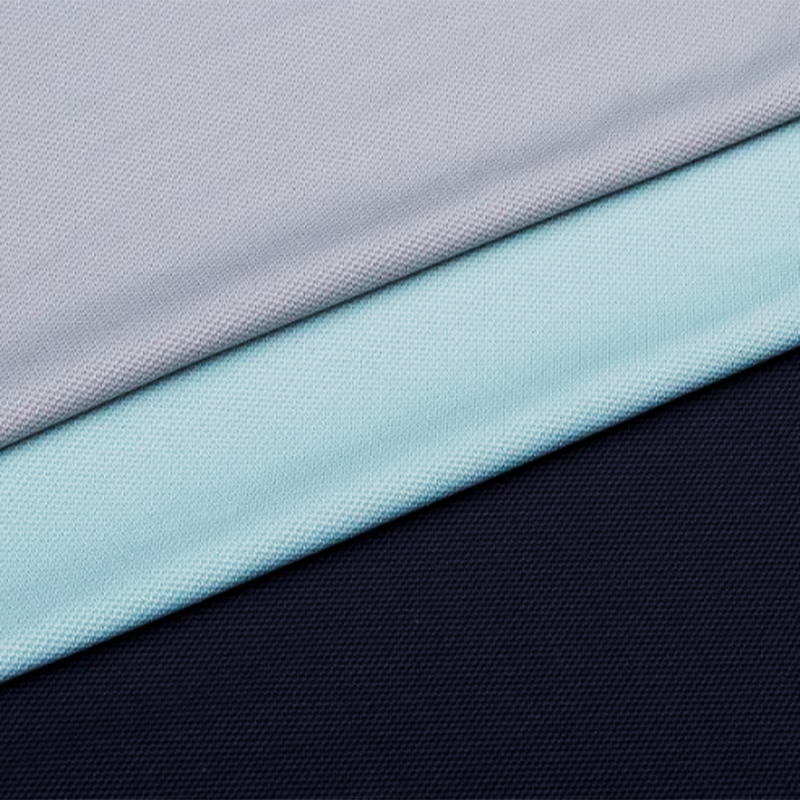Dyeing and finishing warp knitting clothing fabrics—especially those made from nylon with 20% spandex—involve several technical challenges. These challenges arise from the inherent properties of the fibers, the fabric structure, and the performance requirements such as color uniformity, fastness, elasticity retention, and durability under wear and environmental exposure. Below is a detailed analysis of these challenges:
1. Fiber Blending Complexity
Warp-knitted fabrics with a nylon/spandex blend are made from two very different synthetic fibers with distinct chemical and thermal properties:
-
Nylon (polyamide) absorbs dyes readily, especially acid dyes, and has good thermal stability.
-
Spandex (elastane) is highly sensitive to heat and chemicals, and has poor dye uptake.
This mismatch causes complications:
-
Dye affinity varies between fibers, making color matching and shade consistency difficult.
-
Dyeing conditions (temperature, pH, time) must be tightly controlled to avoid fiber damage or color inconsistency between the two components.
2. Heat Sensitivity of Spandex
Spandex begins to degrade or lose its elastic properties at temperatures above 170°C. In dyeing processes, especially thermosol or high-temperature dyeing, excessive heat can lead to:
-
Loss of elasticity or fiber yellowing,
-
Reduction in garment recovery after stretching,
-
Blistering or puckering in the fabric surface due to uneven shrinkage.
As a result, dyeing must occur at lower temperatures (typically below 130°C) with modified procedures, which limits process flexibility and dye penetration.
3. Maintaining Stretch and Recovery
Any chemical treatment or mechanical finishing process (e.g., softening, calendaring, heat setting) must preserve the fabric’s high-stretch properties. Challenges include:
-
Over-finishing can lead to loss of stretch or fabric hardening.
-
Under-finishing can leave the fabric with poor dimensional stability or insufficient softness.
-
Heat setting, often used to stabilize fabric dimensions, must be precisely controlled to avoid over-relaxing or damaging the spandex content.
4. Uniformity of Dyeing
Warp-knitted fabrics often have a fine, tight structure (e.g., in tricot or raschel) which may limit dye penetration and diffusion:
-
Surface tension of the fabric can cause uneven wetting, especially with hydrophobic yarns.
-
Variability in yarn tension or knit density across the fabric width can lead to streakiness or shading.
-
The fabric’s stretch behavior during processing may affect how evenly dye or finish is absorbed.

5. Color Fastness and Durability
For performance wear and sun-protective clothing, the dye must resist:
-
UV light (to prevent fading),
-
Sweat and washing (to prevent dye migration or bleeding),
-
Abrasion (to prevent color wear-off in high-contact areas).
Achieving these standards requires:
-
High-quality dye selections (e.g., lightfast acid dyes),
-
Use of fixing agents or UV stabilizers,
-
Carefully controlled curing and rinsing processes to remove unfixed dye and minimize degradation.
6. Finishing Compatibility
Common textile finishes—such as moisture-wicking, antimicrobial, UV-blocking, or anti-pilling—must be compatible with the elastic nature of warp-knitted nylon/spandex fabrics:
-
Silicone softeners may improve hand feel without reducing stretch, but can cause yellowing over time.
-
Resin treatments may reduce stretch or lead to stiffness if not properly formulated.
-
Nano or micro encapsulated finishes must be applied with care to avoid uneven coverage on the elastic and mobile surface.
To ensure uniformity and durability in dyeing and finishing warp knitting clothing fabrics made of nylon and 20% spandex, manufacturers must:
-
Use precisely controlled dyeing parameters tailored for dual-component fibers,
-
Apply low-temperature, fiber-sensitive treatments to protect spandex integrity,
-
Maintain tight process control to prevent defects such as shading, yellowing, or loss of elasticity,
-
Carefully select and apply compatible finishing agents that preserve stretch and enhance fabric functionality.
These complexities require advanced dyeing techniques, often involving jet dyeing machines, controlled heat setting ovens, and specialty auxiliaries designed for elastomeric blends.

.jpg?imageView2/2/format/jp2)




.png?imageView2/2/format/jp2)
.jpg?imageView2/2/format/jp2)



